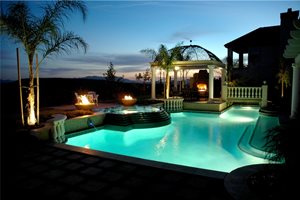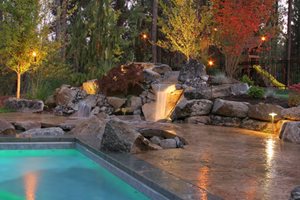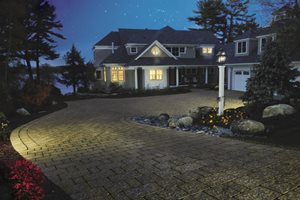Tips for Adding Light to Your Landscape
How to increase your home’s security & get more enjoyment out of your property By: Sarah Hutchinson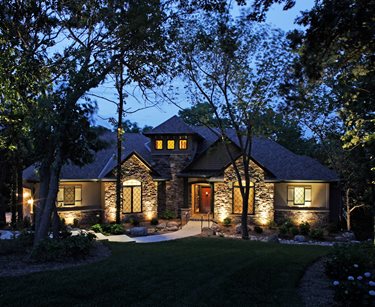
We recently had the opportunity to get tips from Jerry McKay, owner, and Andrew Coleman, lighting designer, of McKay Landscape Lighting. Their company is focused solely on landscape lighting design and installation. For over 20 years McKay has been helping homeowners feel safe and secure at night and get more enjoyment out of their property. Read on to learn tricks of the trade from McKay and Coleman that will help you get the most for your money.
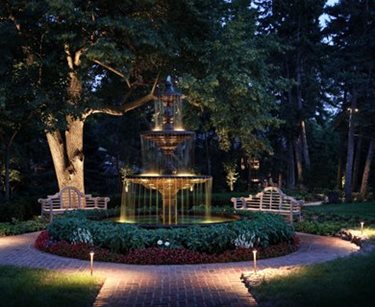
Low-Voltage, LED or Solar?
There are many types of outdoor lighting available today. The average homeowner knows little about their options and can be overwhelmed or easily make the wrong choice. When asked which type of lighting they use most, McKay and Coleman said that low-voltage halogen is still their mainstay. “It is a proven and affordable technology with appealing color temperatures,” they explain. In comparison LED, which is still relatively new to the market, lacks consistent color temperatures. However, McKay and Coleman say that manufacturers are working to develop consistent LED technology and believe that it is the wave of the future because of its substantial energy savings. For those that want to cut energy use entirely, solar lights are an option. If you are considering solar, McKay and Coleman caution, “The results are disappointing, the fixtures are poorly made and the light is dim.”
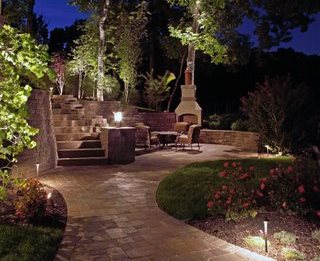
Where to Start
Installing a complete landscape lighting system can cost thousands of dollars. Getting the greatest impact with the least expense is important to homeowners in this position. According to McKay and Coleman, essential outdoor lighting starts with safety. “Highlighting paths, and especially steps, is where you should start if you are on a budget,” they say. Next, they suggest installing a few fixtures uplighting your home or large ornamental trees to increase the aesthetic appeal.
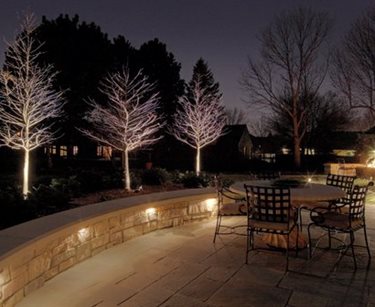
Lighting a Patio
If your patio gets a lot of use after dark, quality lighting is a good investment. McKay and Coleman suggest checking your surroundings first. “If you have the opportunity to down light from trees or your home, do that. The light will feel natural and create a unique evening environment,” they note. If you do not have the ability to down light, use path lights around your patio, focusing mainly on entry points and steps. Also, if you have a seat wall around your patio, wall lights can be incorporated below the cap.

Lighting a Path
When lighting is installed improperly along a walkway it can make your home look like an airport landing strip. To avoid this, McKay and Coleman recommend down lighting when you have the chance. “Light coming from overhead is soft, inviting and feels more natural,” they explain. If you have to use path lights that are low to the ground, make sure the bulbs are only 10 or 20 watts so that the light won’t overpower the space.
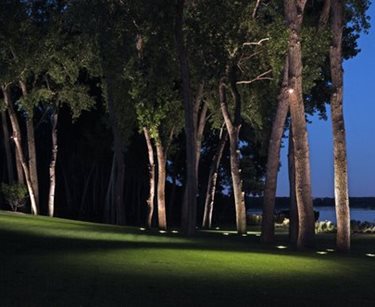
More Tips
- If you are lighting a two story house you want a higher wattage with a more narrow spread
- For aesthetics, lighting large deciduous trees makes the greatest impact
- Mixing different types of light is important and more appealing to the eye
- Choose a quality fixture on the market that is solid copper or brass with a lifetime warranty
- Pick a fixture that looks classy during the day and performs well at night (let the light put on the show at night and not the fixture during the day)

 Backyards
Backyards
 Front Yards
Front Yards
